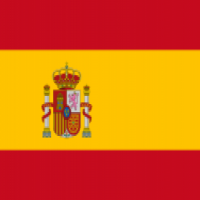Summary:
A Spanish university has developed a new method for the formation of indolizines, based on the use of the Eschenmoser salt, the products of which allow the rapid, simple and efficient detection of nitrites in water/food. This invention solves the disadvantages of the methods known so far, since they do not require highly-reactive and/or highly-toxic substances. It can be applied both in solution and on cotton swabs. Companies interested in license or technical cooperation agreements are sought.
Description:
Nowadays, it is essential to have efficient methods for detecting nitrites due to the risk of their accumulation in both physiological and environmental systems. The intake of this anion can have a detrimental effect on the health of mammals, macro-invertebrates and most aquatic organisms. Nitrites are widely used as preservatives, protecting food from micro-organisms, but, in contrast, under acidic conditions in the stomach, they can give rise to highly carcinogenic compounds (gastric cancer).
Colorimetric methods are the most convenient for the detection of nitrites in water and food, as they are the simplest and most direct ones, usually based on diazotization reactions. However, this test has some disadvantages, such as:
• The need to control the reaction so that it does not decompose the diazonium salt before coupling.
• Narrow working concentration range.
• Long steady-state times.
• Toxicity of the process.
Alternatively, nitrosation/nitration reactions are simpler, since they eliminate the coupling with the second component, although colour changes are not so evident, especially when it is intended to detect trace amounts, and the resulting products can be highly toxic and dangerous.
On the other hand, so far, formylindolizines are obtained by classical formilation methods which have the disadvantage of requiring highly-reactive and/or highly-toxic substances such as phosphoryl chloride or butyl lithium. Furthermore, in some cases more than two reagents are required, apart from the substrate to be formylated and the solvent, with the temperature being an important parameter to be controlled either by heating and cooling.
Therefore, there is a double need: on one hand, to develop new methods for the detection of nitrites that are fast, simple and efficient in different concentration ranges, that can be carried out both in solution and in other types of media, and; on the other hand, to provide new methods for the formylation of indolizines that do not require highly-toxic substances and that are not incompatible with the functional groups of the compounds, and do not require a precise the control of the parametres.
In order to cover these needs, a Spanish university has developed a reaction of 1,3-disubstituted indolizines with the Eschenmoser salt that allows to obtain not the product of dimethylaminomethylation, but the one of a direct and regioseletive formylation at the position 7 of the indolizine ring.
The resulting products have shown high selectivity in the detection of nitrite ions compared to other thirteen anions in an acidic medium. The presence of the nitrite ion with this test is manifested in solution with the appearance of a coloration ranging from reddish, more or less intense, to pinkish, depending on the concentration of the nitrite ion, while the rest of the anions present a pale yellow colour or are colorless (see Figure 1).
The research group is looking for manufacturers of diagnosis kits for water or food analysis applications interested in acquiring this technology for commercial exploitation through patent licensing agreements. The company should be responsible for the development of the commercial prototype, the validation of the technology, and its introduction into the market. The university will be ready to provide technical assistance in each step, if required.
However, the research group would be also interested in establishing technical cooperation agreements to further develop the laboratory-scale method, to find new applications or to adapt it to the company’s needs. The goal of this type of collaboration would be increasing the technology readiness level for a future commercial exploitation of the patent. The university would offer its support based on their know-how; while, the partner sought would provide its expertise to help improve this invention. The university would offer this partner a preferential option to acquire this technology in exclusivity.
Type (e.g. company, R&D institution…), field of industry and Role of Partner Sought:
- Type of partner sought: Companies
- Specific area of activity of the partner: water/food analysis; water pollutants diagnosis kit; diagnosis kit manufacturers.
- Task to be performed:
* In the licenes agreement: to buy a license for the technology, to produce a commercial prototype and make its validation in real scenarios, and to introduce it into the market.
* In the technical cooperation agreement: to provide their expertise in order to collaborate with the scientists on further development and improvements of the technology. The company should identify technical requirements and/or market and client’s needs in order to carry out further technical development so that the market readiness will be increased and the technology could be commercially exploited.
Stage of Development:
Under development/lab tested
Comments Regarding Stage of Development:
Different methods of testing for nitrites have been developed on a laboratory scale with positive results in both drinking water and different foods.
The nitrite detection test can be applied in solution (with more intense colouring), as well as on a white support, such as a cotton swab. For lower concentrations of nitrite, the presence of sodium chloride accelerates the appearance of the colour. This test has been successfully applied in the detection of 3 mg/L of sodium nitrite in drinking water, an amount set by the World Health Organisation as a safe limit, as well as in the detection of nitrites as preservatives in various foods (e.g. Frankfurt sausages). Moreover, the test is equally effective in detecting the maximum amount of nitrite in drinking water set by the Environmental Protection Agency (1 mg/L, 1.45 × 10-5 mol/L).
IPR Status:
Patent(s) applied for but not yet granted
Comments Regarding IPR Status:
Spanish patent application.
External code:
TOES20200918001








